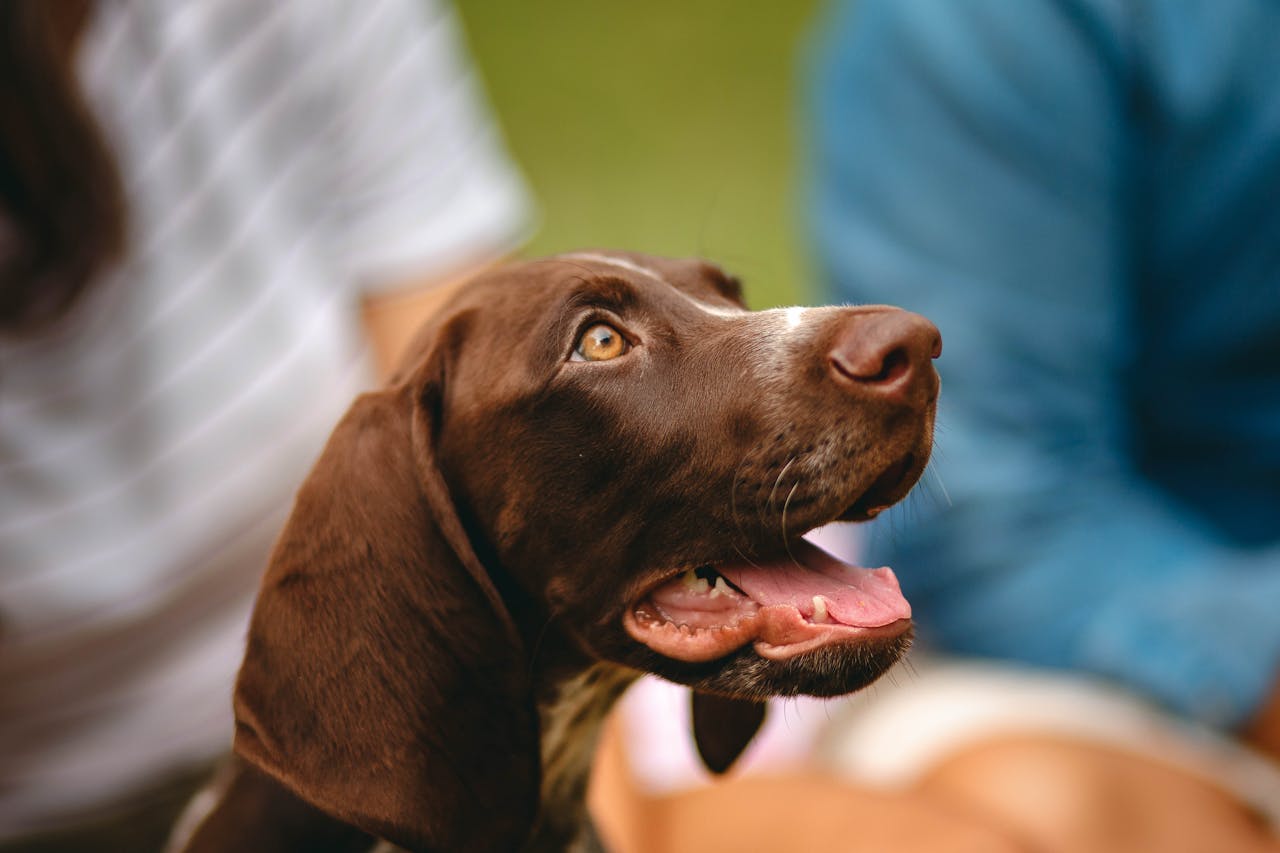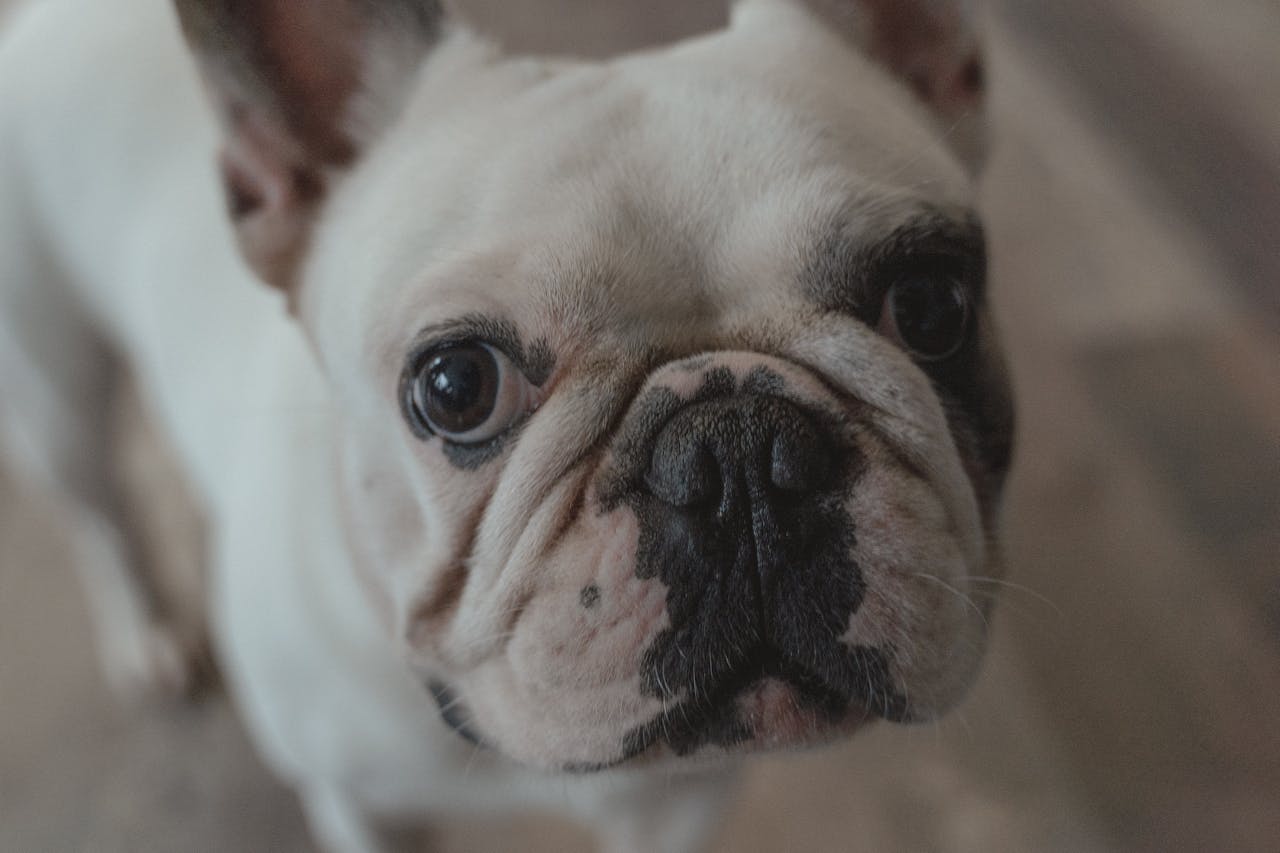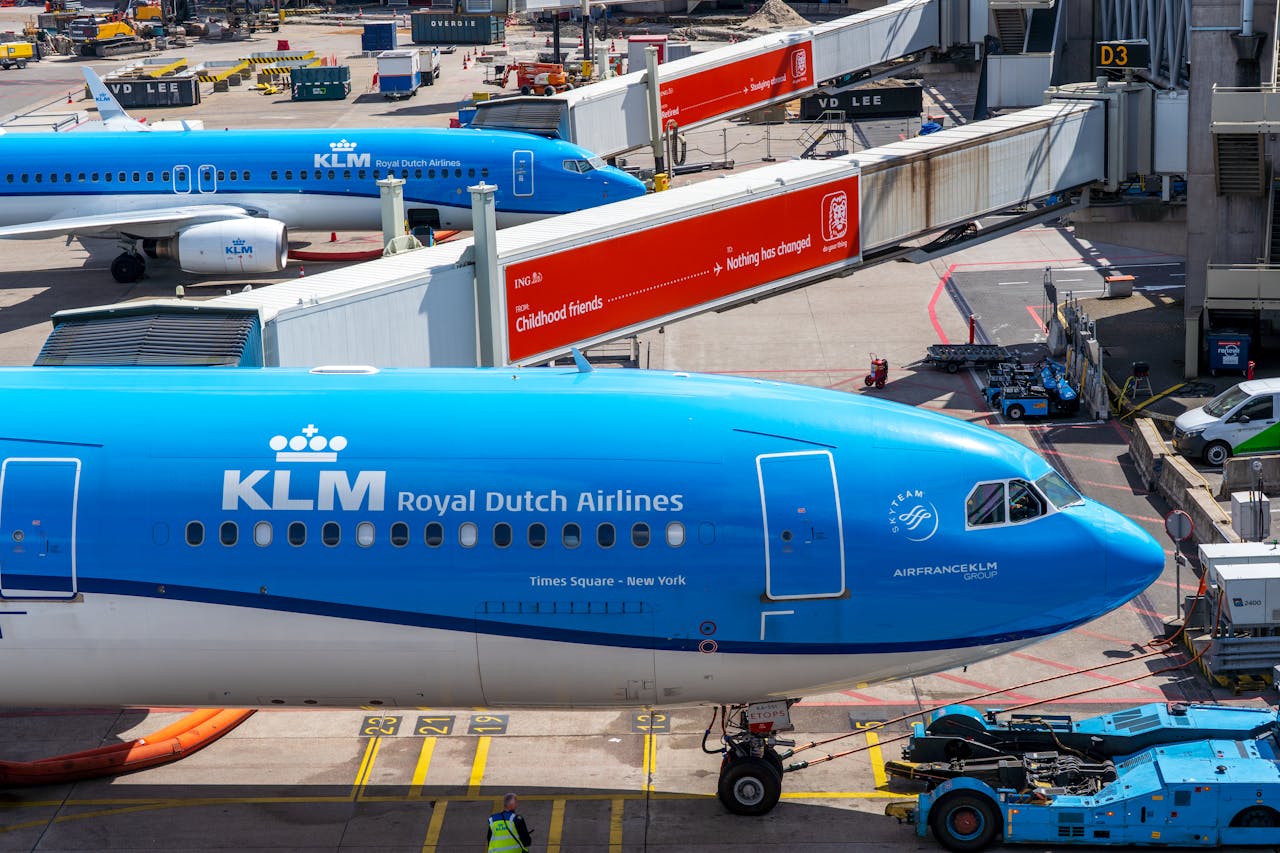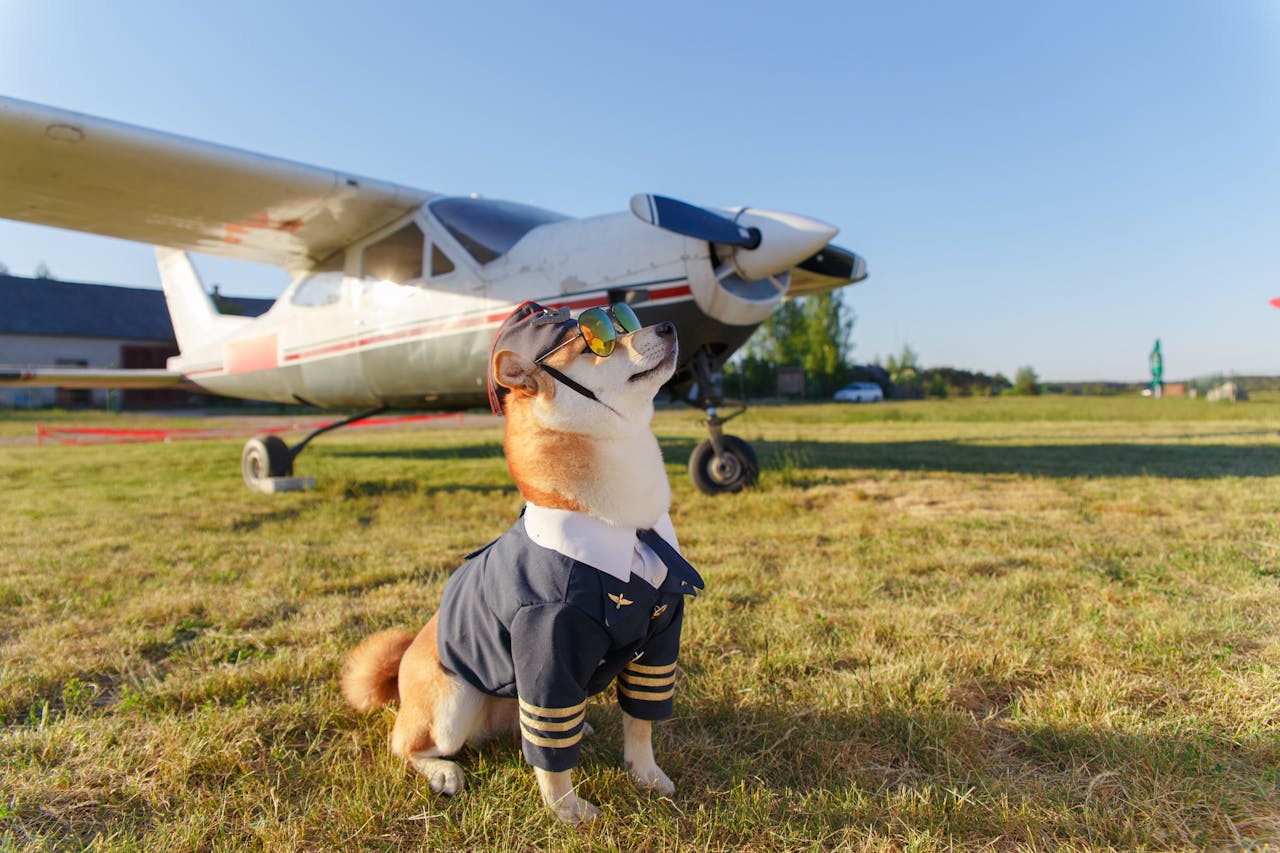Flying in the cargo hold can be anightmare for dogs and cats, which is why a private jet is the ideal solution for traveling safely and comfortably with your four-legged friends.
When flying becomes dangerous for dogs and cats
Every summer the same story repeats itself:extreme temperatures, delayed flights, and pets forced to travel in the un-air-conditioned cargo hold of an airliner. A potentially traumatic, and in some cases deadly, experience.
But why do people continue to board dogs and cats in the cargo hold? And what are the safe alternatives for those who wish to travel with their four-legged friend?
The truth about the cargo hold of airliners: heat, stress and real dangers to animals
Many traditional scheduled airlines offer the option of transporting animals in the cargo hold, but often do not guarantee ideal conditions:
- In summer, the cargo hold can reach temperatures in excess of 40°C, especially during long waits on the runway.
- The environment is noisy, dark and unstable, causing stress and panic in animals.
- Delays, unplanned stopovers or misplacements can aggravate the situation.
- In some documented cases, animals do not survive the flight.
The most dangerous phases of the flight for animals in the cargo hold
The greatest risk to animals transported in the cargo hold of airliners is not so much the flight itself, but the phases on the ground and the changes in pressure and temperature. In particular:
- While taxiing and waiting on the runway, the plane can sit for more than 30 minutes in the sun without active air conditioning in the hold. This is one of the most critical times, especially in summer.
- During takeoff and landing, pressure changes and high noise can generate extreme anxiety, disorientation and, in the worst cases, breathing problems.
- During baggage unloading, animals often remain exposed to heat or cold, waiting for manual transfer, with no immediate protection.
- On flights with stopovers or connecting flights, waiting times in cargo areas can be too long and managed with little regard for the presence of living things.
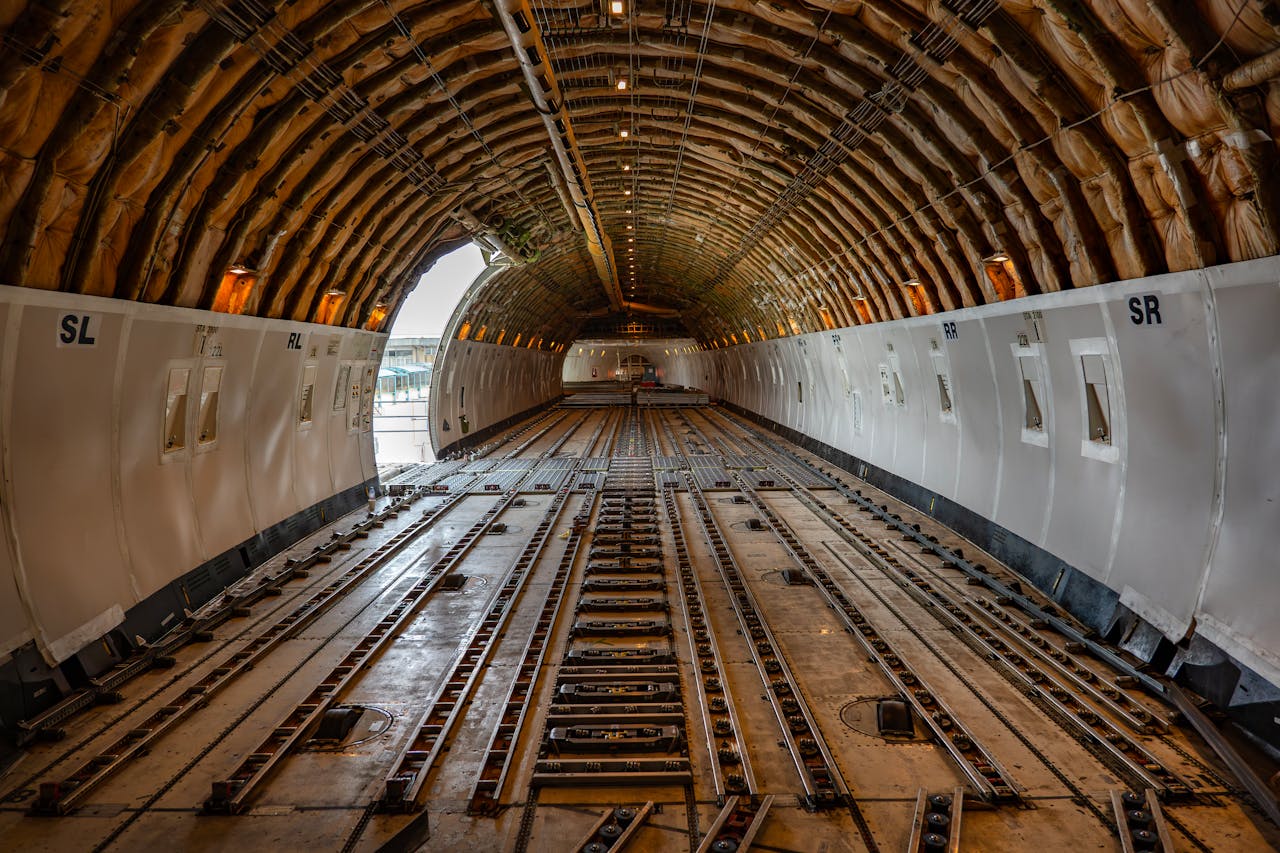
Air conditioning and pressurization: what really happens in the cargo hold of airliners
Many owners are unaware that the cargo hold of airliners is pressurized and air conditioned only after takeoff, and not all airlines apply the same procedures. Therefore, even a short flight can pose a huge risk to a dog or cat.
- Air conditioning and pressurization of the cargo hold begins only after takeoff, once the plane has reached a certain altitude.
- During taxiing, waiting on the runway and boarding, animals may be in an unventilated environment prone to overheating, especially in summer.
- Some aircraft haveareas of the cargo hold not suitable for transporting living things, but this is not always specified when booking.
Pressurization, when active, is also not the same as in the passenger cabin. The change in pressure can cause:
- Ear pain and balance problems
- Wheezing and respiratory distress, especially in brachycephalic animals (such as bulldogs, pugs, Persians)
- Panic, nausea and dehydration
- Death in the worst cases
The problem is exacerbated on short flights, where time aloft is minimal, while time on the ground-in critical conditions-can account for more than half of the trip.
CAUTION: Some breeds of dogs and cats are particularly at risk during flight from too much heat
According to IATA guidelines and many airlines, certain breeds of dogs and cats are more vulnerable to respiratory and thermal problems during flights, especially when carried in the cargo hold. These include:
Brachycephalic (short-snouted) dogs:
- English Bulldog
- French Bulldog
- Pug (Pug)
- Boxer
- Boston Terrier
- Shih Tzu
- Pekingese
Brachycephalic cats:
- Persian
- Himalayan
- Exotic Shorthair
These breeds of dogs and cats have more delicate respiratory systems, which makes them very sensitive to heat, stress and pressure variation. For this very reason, many airlines prohibit or discourage cargo in the cargo hold for these breeds, especially in summer.
Recommended solution: for these breeds, flying by private jet is the only way to ensure cabin travel, with controlled temperature and optimal conditions at every stage of the flight.
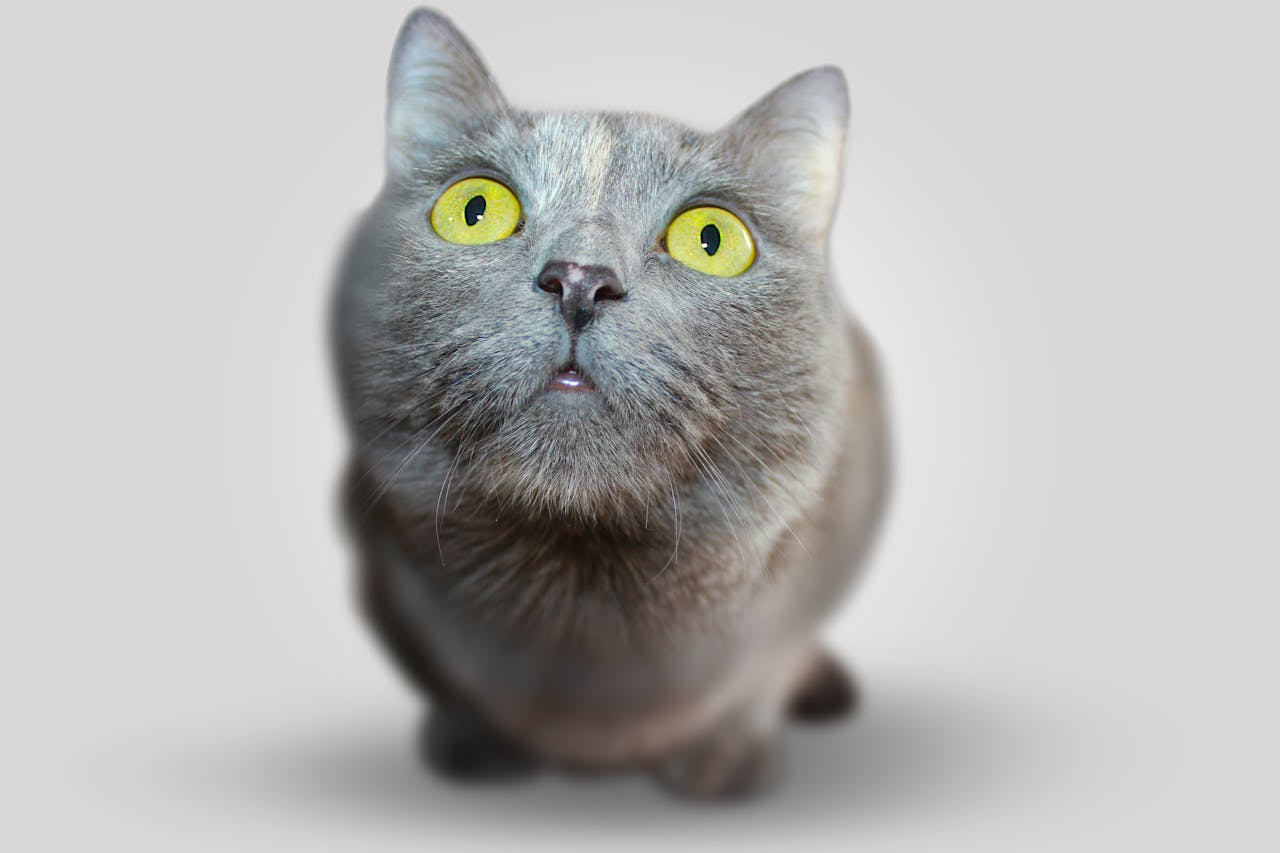
Why the private jet is the safest solution for pets
Flying by private jet with your pet eliminates all these risks. Here are the main benefits:
- Animals travel in the cabin, next to their owners
- Temperature control, silence and comfort
- No mandatory carriers or stressful check-ins
- Total flexibility: you leave and arrive when you want to
- No restrictions on breed, size or number (within certain limits)
Simply put, private flying turns travel into a serene experience for animals as well.
Pet-friendly airports in Europe for flying by private jet with your pets
Traveling with your dog or cat is easier by choosing airports that offer dedicated services for four-legged friends. Here are some of the best pet-friendly airports in Europe, perfect for those flying by private jet:
- London Biggin Hill (EGKB) – One of the most exclusive private airports, with VIP services and dedicated relaxation areas for animals. Perfect for comfortable and stress-free travel.
- Paris Le Bourget (LFPB) – The main airport for private jets in Paris, offers pet-friendly zones and easy access to animals with dedicated assistance.
- Munich (EDDM) – With large pet relief areas and trained staff, it is ideal for those traveling with pets in Central Europe.
- Zurich (LSZH) – Offers personalized services for animals in transit and special areas for them to rest during the journey.
Tip: Always contact the airport before travel to check schedules and availability of pet-friendly services.
What do traditional scheduled airlines respond?
Some airlines such as Lufthansa or Air France offer improved services for animal transport, but:
- Not all holds are air-conditioned
- There are weight and race limitations
- Often the same safety cannot be guaranteed as a private flight
Thanks to PrivateJetFinder you travel with your pet in complete safety
If traveling with your dog or cat is a priority, remember that the only way to ensure their comfort, fresh air, safety, and companionship for the duration of the flight is to choose a private jet.
On PrivateJetFinder you can:
- Fly your pet into the cabin with you
- Avoid long waits and stress from boarding
- Choose pet-friendly airports and dedicated routes
- Personalize every detail of the trip
Contact us to receive a free quote or find out which routes are best for traveling with pets.
Frequently Asked Questions (FAQ) about air travel with pets
1. Is my dog or cat in danger of dying during a flight in the cargo hold?
– Yes, unfortunately in some cases it has happened. The cargo hold of airliners can prove dangerous, especially for animals that are elderly, anxious, sick or belong to brachycephalic breeds (such as bulldogs, pugs, Persian cats), which are known to be more susceptible to stress and respiratory problems. The most common causes of death include:
-
Hyperthermia (heat stroke)
-
Drastic drop in temperature
-
Extreme stress and heart failure
-
Oxygen deficiency or respiratory problems
It is important to note that the risk is low, but real. Many veterinarians advise against having animals travel in the cargo hold, especially for long flights or during climatically extreme periods.
2. What happens when it is too hot and pressurization is not ideal in the cargo hold?
– During taxiing and before takeoff, the hold may not yet be pressurized or air conditioned, exposing the animal to extreme temperatures. In summer, this can cause heat stroke, while in winter, hypothermia is risked.
Once airborne, most commercial aircraft pressurize and air condition the cargo hold, but any malfunctions or personnel errors can cause critical conditions:
-
Insufficient pressurization = risk of hypoxia (oxygen deficiency)
-
Inadequate air conditioning = harmful temperature changes
-
Prolonged ground delays = out-of-control temperatures
These variables are neither visible nor controllable by the owner, and this is what makes the cargo hold the least safe place for animals.
3. Which breeds of animals are most at risk during flight?
– Brachycephalic breeds (bulldog, pug, Persian, etc.) have breathing difficulties that can worsen with the varying pressure and temperature of the cargo hold, increasing the risk of accidents.
4. What documents do I need to travel with my pet?
– You need an up-to-date health booklet, European animal passport (if applicable), and in some cases specific certificates such as proof of rabies vaccination. It is important to inquire in advance for the destination.
5. How can I reduce my pet’s stress during the flight?
The best option is to choose a private jet flight, where the animal travels with you in the cabin. Otherwise, make sure the carrier is comfortable, arrive early at the airport to avoid rushing, and follow the vet’s instructions.
- Also read our article On the dangers of pressurization for our pet travel companions
How much does it cost to fly by private jet with a pet ?
Of course, the price of a private flight varies depending on the route and type of jet. However, for many families or owners of large animals, the comfort and safety are worth the price.
Your four-legged friend deserves the same comfort you choose for yourself.

